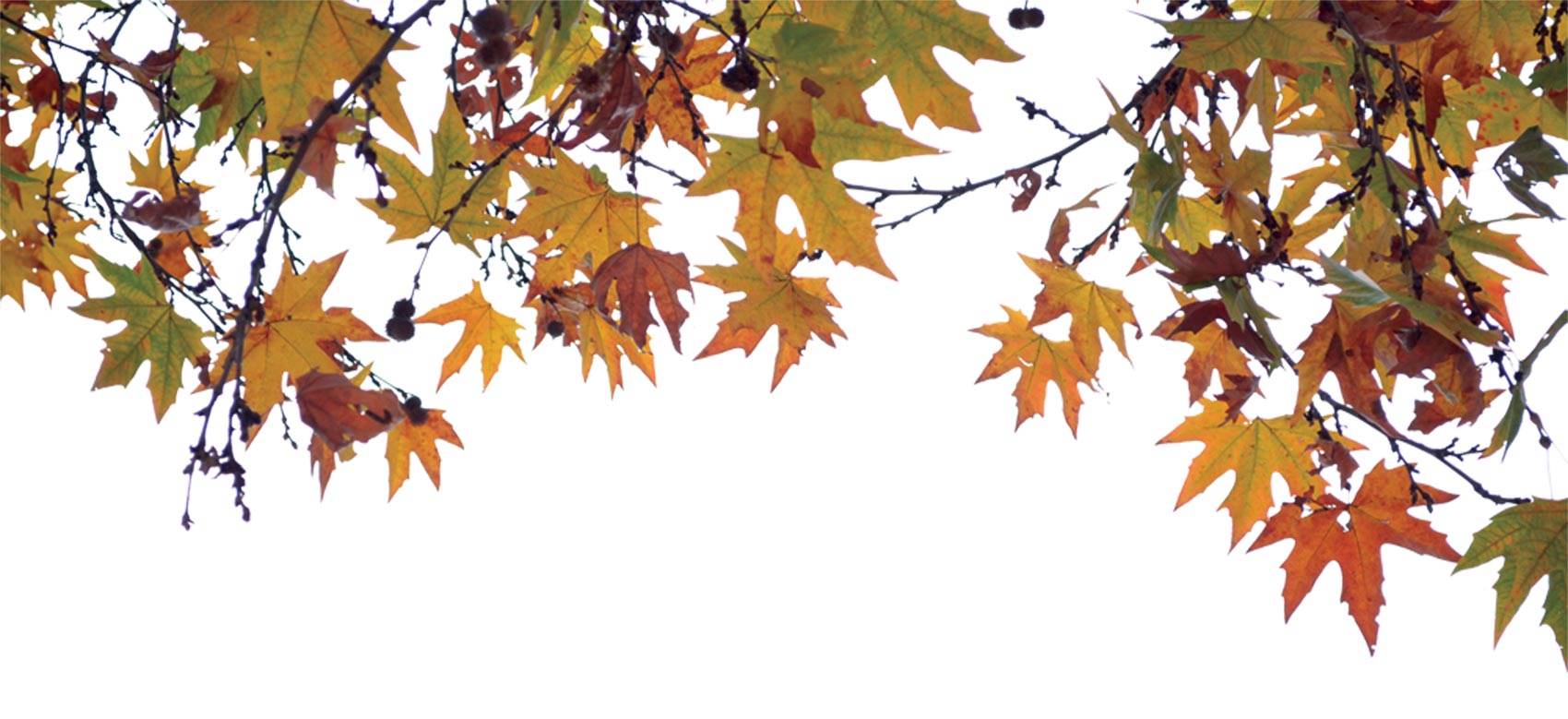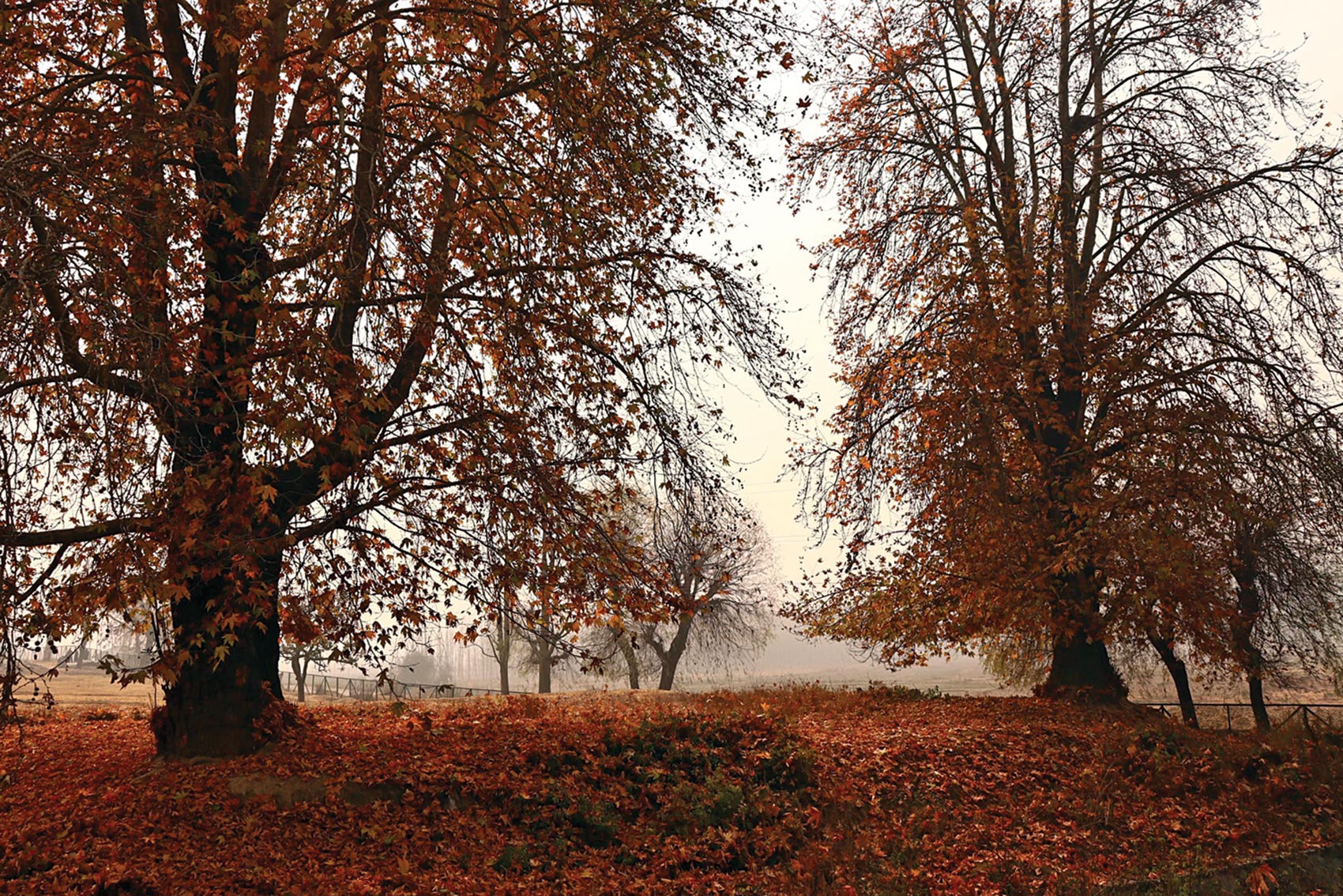Portrait Of A Tree On Fire: The Kashmir Chinar
First published in Sanctuary Asia,
Vol. 42
No. 4,
April 2022
By Rithika Fernandes
It all started with an old black and white photograph. In it was my mother, dressed in a phera with a taranga outfitted on her head, a half-smile on her face. In the background loomed a pair of large trees, which looked to my untrained, Hollywood-versed-self, like maple. The photograph was taken at Nishat Bagh, the Garden of Joy, one of the four Mughal gardens in Srinagar and the second largest in the Valley. It is said that when the garden was completed in 1633, Emperor Shah Jahan was so impressed by its beauty, that he dropped several hints to Asif Khan, his father-in-law who built it, that the garden be gifted to him. Asif Khan did not pick-up on these cues and Shah Jahan flew into a rage ordering that water sources to Nishat Bagh be cut off. It lay parched and ignored for some time before favour was restored.
Nestled at the base of the Zabarwan mountains, its rectangular terraced layout and central water feature draw the eyes to spectacular views of the gardens, the mountains and the Dal Lake. Nishat Bagh is also considered to be the best possible emulation of a Chahar Bagh in the Islamic world. And lining its symmetrical avenues, lending the equivalent of what saffron does to a biryani, are my mistaken-for-maple trees, the chinars. That photograph was tinder for what became a deep desire to visit Kashmir. Twenty years later, after several broken promises my father made to me, wars and civil unrest in the valley, I set foot into Srinagar.

Photo: Public Domain/Umair.
Part of the Kashmir Fabric
The oriental plane trees Platanus orientalis kashmeriana or as they are called locally chinar, Booyn/Buen, are not native to India. Plane trees are representatives of the genus Platanus, the single living genus of the family Platanaceae, found in India. Worldwide, the family only contains 10 species. Considered Old World Sycamores, their native range spans Southern Europe to the Iranian Plateau.
It is believed that chinars were brought from Iran by the Sufi Saint Syed Qasim Shah in 1374. Between 1377 and 1470, the trees spread, assisted by the Sultans of Kashmir, Persian merchants, ascetics and mystics. However, it was the Mughal rulers, commencing with Akbar who became so enamoured with the chinars, planting them everywhere and bestowing upon them the title ‘Royal Trees’.
It’s hard to miss the chinars of Srinagar. If you’re lucky, you’ll see them set the city aflame with their deep red, orange and yellow-lobed leaves, heralding the harvest season and Harud, Autumn. “Chinar ka matlab hai – Kya Aag... Whadafire!”, a forest officer accompanying us on our city survey cheerfully declared. I was visiting the city for the first time, not as a tourist, but as an urban ecologist. Chemical changes in the leaf pigments induced by changing light and temperature are responsible for this stunning pyro-imagery. During the spring and summer, chlorophyll, the green pigment responsible for plants manufacturing their own food, is dominant in the leaf. It masks other pigments like the yellow xanthophylls and orange-red carotenes. In autumn, chlorophyll breaks down allowing the yellow and orange to show. Despite the trees still sporting their summer green-gold during my visit, my eyes lit up.
Platanus orientalis are living fossils, and have assumed significant roles in the cultural histories of several countries including Greece and Persia. Hippocrates is believed to have taught medicine under an Oriental Plane Tree while the trees are venerated by Iranians believing them to be sacred. To some Kashmiris they are an indispensable part of local heritage represented in the arts – whether in the soft weave of a Pashmina shawl, the rousing words of Allama Iqbal or Lal-Ded, the satiating fullness of a Peer Khairaat, the camaraderie of a Bhaand Pather, the lilt of a surname in the valley or the familiar contours of a neighbourhood.
Oriental plane trees and their relatives are preferred in cities worldwide for the shade they so generously give, their beautiful foliage and capacity to grow in nutrient deficient soils. This last ability is attributed to proteoid roots, which are short-lived, clustered roots, that assist the establishment of the plant in such soils. Considered to be relatively fast-growing, long-living, deciduous species, the trees can reach ages of more than 200 years. These reasons possibly precipitated the Mughals’ decisions to incorporate them not only as avenue trees but also in the gardens they constructed. Several studies show that chinars are able to tolerate pollution making them ideal temperate roadside trees. The London plane tree Platanus × hispanica, hybrid of the oriental plane and the American plane Platanus occidentalis is favoured for this very reason as well as drought and compacted soil tolerance. In Srinagar, I saw several large birds like the Black Kite, Herons, Egrets, Large-billed Crows and Jackdaws preferentially roosting and nesting in the trees.

During autumn, chinar trees in Srinagar set the city aflame in a glory of orange and red. These trees are an important part of the city’s cultural fabric. Photo: Public Domain/Firdous Parray.
Is a non-native tree worth saving?
As I travelled the city interacting with officials of the Forest Department and State Forest Research Institute (SFRI), I learned that chinars are in decline not just in Srinagar, but across Kashmir. Despite being the state tree of J&K, the biggest threats they face are illegal felling, apathy and urbanisation. Once numbering 40,000, current estimates put them at 17,000-25,000. INTACH reported in 2016 that the Shalimar Garden chinars were drying out. The report also highlighted that plant disease and pest infestation was going untreated across the city. Strangely enough, in Tehran, Iran, their native range, the trees are facing the same fate for some of the very same reasons. Canker stain, a fungal disease caused by Alternaria kashmeriana, lethal to the species, is rapidly spreading in Kashmir.
One important and often overlooked fact is that chinars are a cultivated species in Kashmir. They can reproduce by seed, vegetative cuttings and regenerate from root suckers. However, sources state that there is only a 45-50 per cent success rate of seed germination. Although vegetative propagation is relatively easier, it requires human intervention such as raising propagules in nurseries. And so, public departments like the Floriculture, Forest Department and SFRI have initiated several programmes targeting the conservation of the tree’s gene pool by establishing nurseries, conducting awareness programmes, inventorying and geotagging trees, declaring March 15th as ‘Chinar Plantation Day’, and banning the cutting of the trees without proper permission.
As conversations around biodiversity examine the impacts of alien species in local ecosystems, the concept of ecological triage in an era of extinction, ecosystem benefits and services offered as a means to conserve species, I cannot help but ask whether protecting this non-native tree from disappearing across Kashmir is worth it. But then I think back to that black-and-white photo, to the history and emotion associated with chinars and the roles of cities in nurturing non-native biodiversity. A study on the tree in Italy just outside its native range offers some food for thought, “there are no absolute criteria for conservation because all conservation objectives can be considered as cultural values. In this context, Platanus orientalis should be protected as a symbolic tree, an archaeophyte testifying an ancient common Mediterranean cultural heritage, worthy of preservation but outside of natural habitats.” The truth and relevance of this in the Kashmir context, can only be answered by Kashmiris.
Rithika Fernandes is an Urban Ecologist at ICLEI South Asia, who is committed to working with local governments on building sustainable cities.



